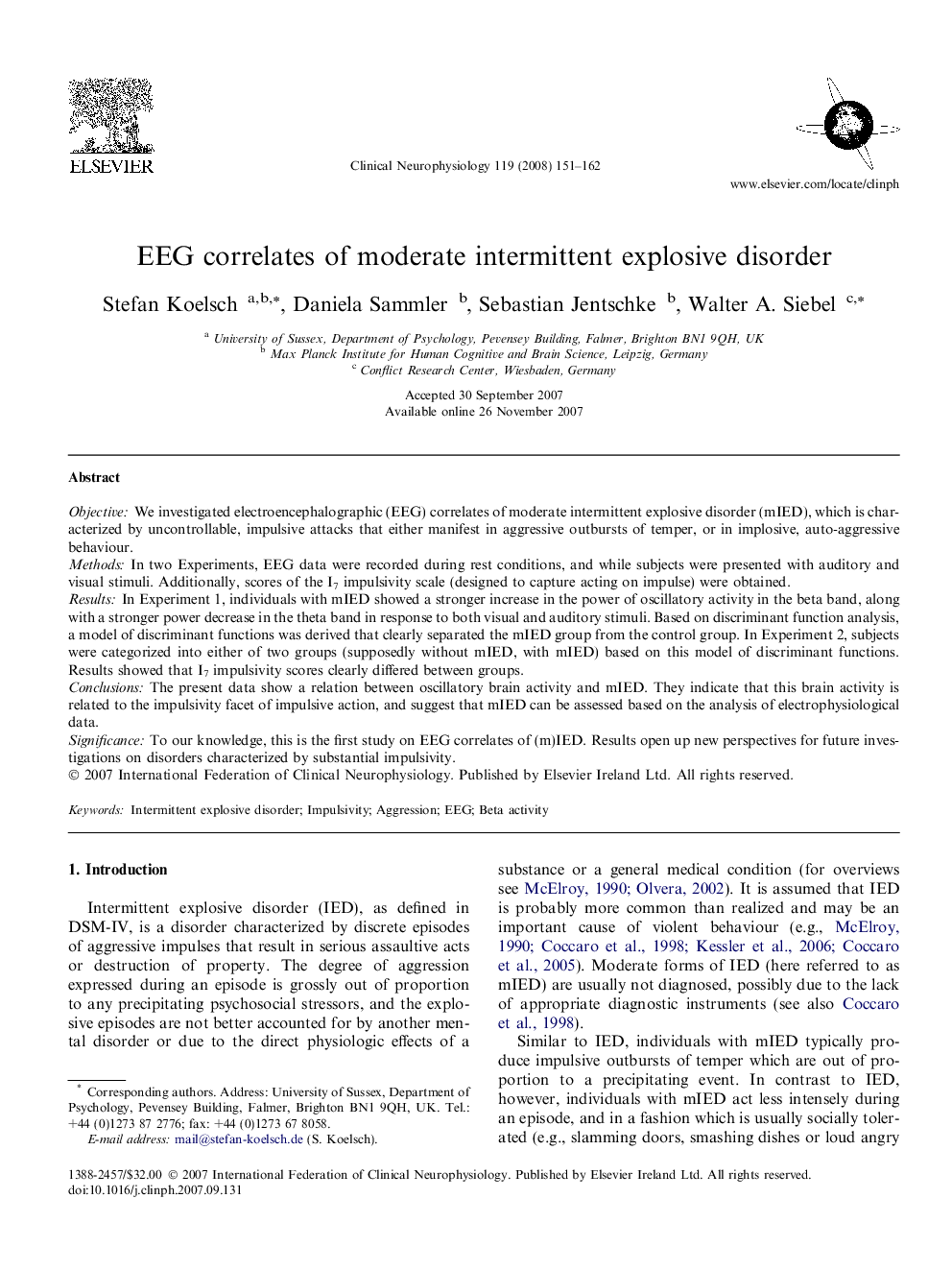| Article ID | Journal | Published Year | Pages | File Type |
|---|---|---|---|---|
| 3047050 | Clinical Neurophysiology | 2008 | 12 Pages |
ObjectiveWe investigated electroencephalographic (EEG) correlates of moderate intermittent explosive disorder (mIED), which is characterized by uncontrollable, impulsive attacks that either manifest in aggressive outbursts of temper, or in implosive, auto-aggressive behaviour.MethodsIn two Experiments, EEG data were recorded during rest conditions, and while subjects were presented with auditory and visual stimuli. Additionally, scores of the I7 impulsivity scale (designed to capture acting on impulse) were obtained.ResultsIn Experiment 1, individuals with mIED showed a stronger increase in the power of oscillatory activity in the beta band, along with a stronger power decrease in the theta band in response to both visual and auditory stimuli. Based on discriminant function analysis, a model of discriminant functions was derived that clearly separated the mIED group from the control group. In Experiment 2, subjects were categorized into either of two groups (supposedly without mIED, with mIED) based on this model of discriminant functions. Results showed that I7 impulsivity scores clearly differed between groups.ConclusionsThe present data show a relation between oscillatory brain activity and mIED. They indicate that this brain activity is related to the impulsivity facet of impulsive action, and suggest that mIED can be assessed based on the analysis of electrophysiological data.SignificanceTo our knowledge, this is the first study on EEG correlates of (m)IED. Results open up new perspectives for future investigations on disorders characterized by substantial impulsivity.
